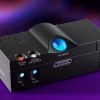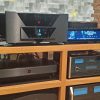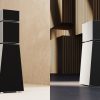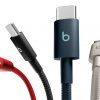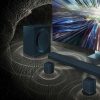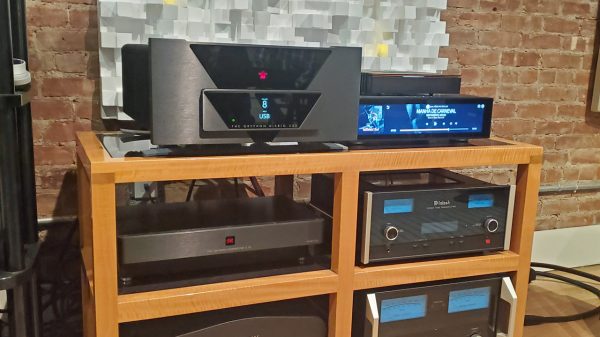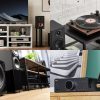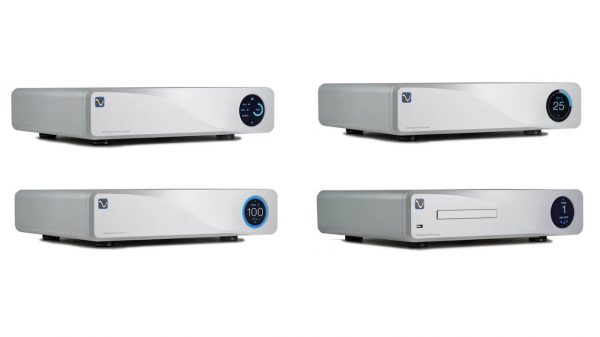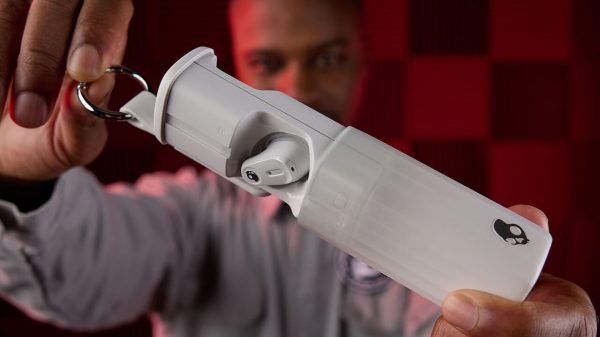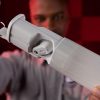Why do brands reuse model names? We’re not huge fans of the practice because it serves as a point of confusion for consumers. Audioengine is not alone in the practice but we are not sure that it helps create any kind of excitement around a “new” product when consumers think that nothing has changed. The Audioengine DAC3 has been around for a number of years and you are probably wondering why we decided to review it now.
Unlike its predecessor, the DAC3 features a new DAC chip, physical volume controls and some additional tweaks that were not present on the previous iteration.
Having started off the review with that level of criticism, I want to also acknowledge owning several of their products over the years and have nothing but praise for their customer support and technical help.
EIC Ian White has reviewed a number of their loudspeakers going back almost a decade and still uses the A2+ wireless speakers along with the S6 powered subwoofer as a bedroom system.
Having conquered the affordable passive and wireless desktop loudspeaker market, Audioengine pivoted to the DAC and portable headphone amplifier category with some level of success.
Audioengine introduced the D1 DAC and headphone amplifier and their first foray into the category proved to be a capable USB pre-amplifier for those with powered loudspeakers. I was so impressed that I purchased one and used it for many years.

DAC3
The DAC3 first appeared in 2014 and was Audioengine’s entry into the Dongle DAC market; it served a very different purpose than the dozens of models that exist in 2023 because the focus in 2014 was connecting a computer to headphones or loudspeakers — not a smartphone to headphones.
DAPs were still not a big category and nobody wanted something that bulky connected to a phone.
The first generation DAC3 used a fixed USB Type-A connector at one end, with a 3.5mm output jack at the other and relied on the source device for volume control.
The aluminum shell felt rather robust and the construction quality for $99 USD was extremely good. Another advantage was that it offered plug and play connectivity with both PCs and Apple computers. We dug out the manual and there was no mention of Android or Apple iPhones at all.
The 2022 revision of the DAC3 still offers some of the original features but also offers some updates that are worth mentioning. Audioengine decided to stick with the aluminum shell and 3.5mm headphone jack, but have replaced the USB Type-A port with a Type-C that allows the use of either USB or Lightning cables and now include a volume rocker (which is placed on the left side) so that users do not have to rely on the volume control on their smartphone.
The overall weight has been reduced and the DAC3 is marginally smaller at 2″H x .75″W x .50″D.
Audioengine has updated the DAC which is a now a ES9281A Pro system on a chip which supports up to 32-bit/768kHz PCM and DSD512 natively. Unfortunately, Audioengine kept the Ti TAS1020 USB controller from the earlier models to maintain USB 1.1 support for older systems and game controllers; which effectively limits the DAC3 to 24-bit/96kHz just like its predecessor.

The DAC3 will accept 188.2kHz and 192kHz from a source device but users end up with a maximum of 24-bit/96kHz. We are confident that this was done to maintain compatibility with other devices, but with the competition supporting both USB 1.1 and a higher bit rate when using USB 2.0 and 3.0. — we are really unsure why Audioengine decided to take this route.
Also kept from the original model is the LME49726 op-amp used to amplify the ES9281A Pro’s output; something we find curious as the ES9281A Pro has a headphone amplifier built-in to its design; which is more costly and again potentially aimed at using the DAC3 as a DAC/pre-amp for their powered speakers — versus being used as a headphone dongle primarily.
One of the claims on the Ti data sheet for the LME49726 is its ability to drive a 2000 ohms load which certainly sounds more like a powered monitor than a headphone.

Sound
The DAC3 supports both iOS and Android and we used a Samsung smartphone and iPhone to guarantee satisfactory results with both.
Dongle DACs need to be able to drive both high and low sensitivity earphones and headphones and we decided to use a cross section of affordable and rather expensive models to see how well this DAC/headphone amplifier would perform.
Because of the specifications, we also tried a number of powered monitors because it felt like Audioengine designed the DAC3 for that type of user.
Sound quality is tough to judge with both DAPs and dongles because the headphone contributes so much to the overall result; I started my testing with the Campfire Andromeda as I know it extremely well and anything added or removed by the DAC3 would be rather evident. I also use the same track list for each review so I know the source material by heart at this stage.
The bass response featured a strong amount of impact and definition without any discernible lift or coloration from the DAC3. The Andromeda IEMs are not particularly bass heavy and that came through with the DAC3.
Switching over to the UE Live IEMs which do exhibit a stronger low end with greater extension and impact, the bass response did perk up in terms of overall quantity — but there was a definite loss of texture and detail in comparison to other Dongle DACs.
It was a pattern across all of the headphones and earphones that were tested with the DAC3; slightly less detail and texture but a rather high quality of clarity and impact overall.

We switched back to the Andromeda IEMs which are a great test of midrange resolution and tonality. The DAC3 proved to be rather strong in this area presenting just enough detail to sound natural; vocals came across rather well pushing slightly forward of the mix with good stereo separation and timbre.
Guitar had sufficient edge at first, but there was some noticeable roll-off on some tracks. Violin notes had sufficient energy and accurate tonality but there was slightly less resolution and detail compared to other Dongle DACs in the same price range.
The treble range was well reproduced without any shelving of top end energy and I never felt that it was overly polite with most recordings.
The soundstage performance was stronger than expected; there was certainly more depth than width but everything felt well proportioned. Small venues felt small and larger ones were reproduced with a great deal of accuracy.
Imaging was rather well defined with movements on the stage easily tracked and every musician was properly placed within the soundstage.

Switching to the AirPulse A100 powered speakers, the little DAC3 was right at home at full volume from a PC to the speaker with a 3.5mm to RCA cable. In that respect, the new version of the DAC3 continues to serve the same role of the original, but with improved sound quality.
At full power, the DAC3 outputs 2Vrms so it is appropriate to connect it to line level inputs on a preamplifier.
I had the same experience when I switched to the JBL 4329P, but there were moments when it felt like I was eating a Happy Meal whilst consuming a few glasses of Glenrothes. The JBL are designed to work with almost everything but really can’t show off their high-end capabilities without a far superior DAC and source on the other end.
Other sources connected to my selection of headphones, earphones, and powered loudspeakers delivered greater resolution, detail, and texture.
While listening to the JBLs connected to the DAC3, it became apparent that the Audioengine DAC might be ideal for schools and organizations looking to improve the sound quality of their events without having to spend more than $150.
The little DAC3 would be a good pairing with a laptop and a set of PA speakers for dances in the high-school gym or outdoor festivals where the environment isn’t conducive to micro-detail anyway and size and weight become bigger considerations.
Conclusion
The Audioengine DAC3 is a definite improvement over the previous generation and it certainly offers a cost-effective way to improve the sound of powered desktop speakers and affordable headphones and IEMs. Making it compatible with iOS, Android, Macs, and PCs was certainly necessary and the external volume rocker works as advertised.
The smaller footprint and sturdy aluminum chassis make it a good value in the category.
My biggest issues involve the decision to limit the performance of the DAC and also not utilize the headphone amplifier on the existing chip that could provide even better performance.
Both of these decisions hobble the DAC3 and prohibit it from being a “great” Dongle DAC/headphone amplifier — something that we find disappointing.
Where to buy: $149 at audioengine.com | Crutchfield | Amazon


